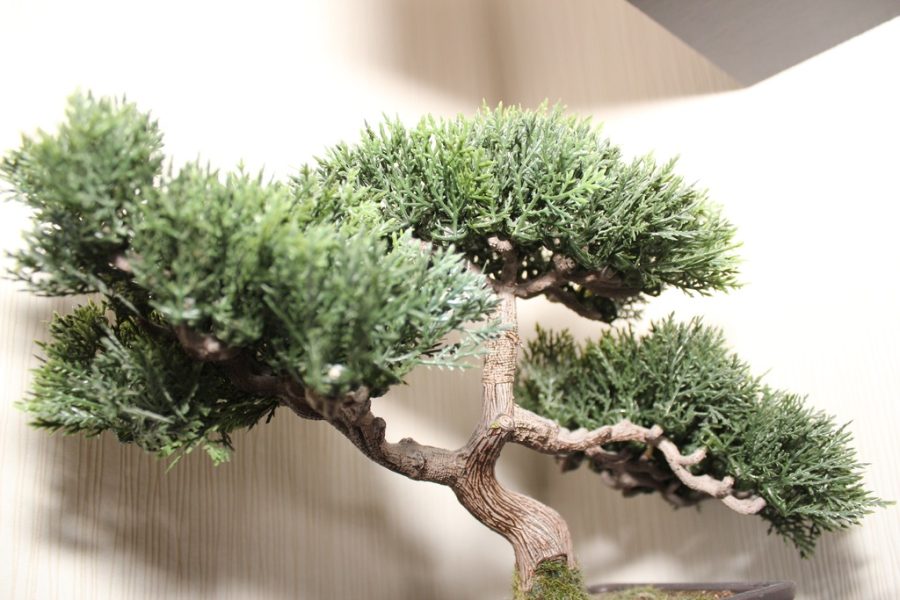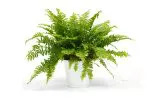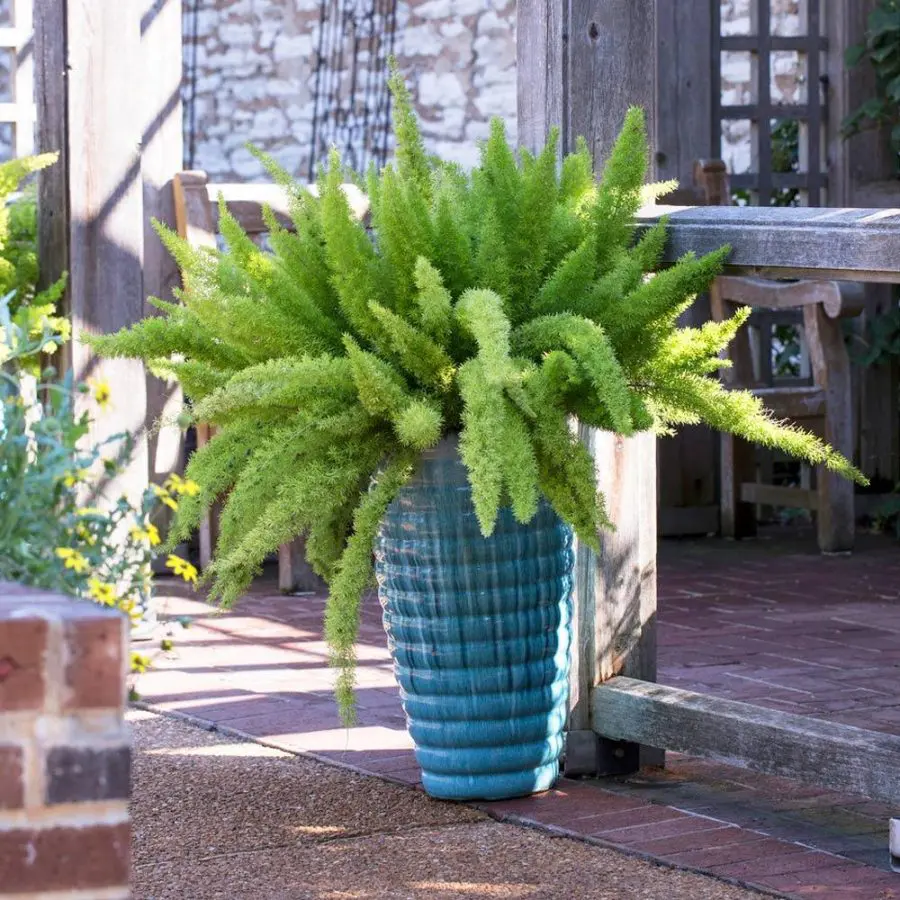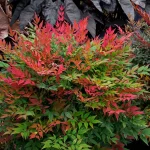This post contains affiliate links. If you buy something from one of our links we may earn a commission. Thanks

Are you wondering can juniper bonsai be kept indoors? Explore the world of indoor juniper bonsai care and learn how to keep your tree thriving year-round!
Juniper Bonsai trees are best suited for outdoor conditions, as they require full sun and fluctuating temperatures. However, if you must keep one indoors, place it near a sunny window and provide supplemental lighting. Keep humidity high and ensure proper watering to mimic its natural outdoor environment.
If you’re looking for a touch of nature to add to your indoor space, you may be wondering if juniper bonsai trees can be kept indoors.
While these beautiful trees are traditionally grown outdoors, with proper care and planning, they can certainly thrive inside your home.
So, get ready to add some green to your space, and let’s explore the world of indoor juniper bonsai trees!
History And Symbolism Of Juniper Bonsai Trees
Juniper bonsai trees have a long and rich history in the art of bonsai.
The earliest known record of bonsai cultivation dates back to the Tang Dynasty in China, over a thousand years ago.
It was later adopted by the Japanese, who refined the art and made it what it is today.
Juniper bonsai trees are particularly prized in the world of bonsai for their hardiness, beautiful foliage, and intricate shapes they can be trained into.
Bonsai Tree Symbolism
Beyond their cultural significance, juniper bonsai trees also hold a special symbolism.
They are often associated with strength and resilience, as they are able to thrive in harsh conditions and can live for hundreds of years.
This makes them a popular choice for gifts or personal keepsakes, as they are thought to bring good luck and long life.
Personally, I have always been fascinated by the beauty and intricacy of juniper bonsai trees.
I first became interested in bonsai as a teenager, when my dad gifted me a small juniper bonsai tree for my birthday.
I remember spending hours carefully trimming and shaping its branches, and feeling a sense of pride and accomplishment as it grew and flourished under my care.
To this day, I find working with juniper bonsai trees to be a calming and meditative hobby, and I’m always eager to share my knowledge and experience with others who are interested in this art form.
Can Juniper Bonsai Be Kept Indoors?
Have you ever wondered if you can keep a juniper bonsai tree indoors?
Well, you’re in luck because that’s exactly what we’re going to be talking about today.
Juniper bonsai trees are a popular choice among bonsai enthusiasts, but many people are unsure if they can thrive indoors.
In this blog post, we’ll be exploring the best juniper varieties for bonsai trees, basic care, and maintenance tips, and how to grow juniper bonsai trees indoors.
Juniper bonsai trees have become increasingly popular in recent years due to their unique aesthetic and symbolism.
As a form of living art, these miniature trees require proper care and maintenance to thrive both indoors and outdoors.
This blog post aims to provide beginners with a guide on the best juniper varieties for bonsai, basic care and maintenance tips, and how to grow them indoors.
Whether you’re a bonsai enthusiast or simply interested in starting a new hobby, this guide will give you the necessary tools to grow healthy and beautiful juniper bonsai trees.
So sit back, relax, and let’s dive into the wonderful world of juniper bonsai trees!
Best Juniper Varieties for Bonsai Trees
With proper care, juniper bonsai trees can thrive both indoors and outdoors.
Let’s take a look at the best juniper varieties for bonsai trees.
There are several popular varieties to choose from, but some are better suited for bonsai than others.
In this section, we’ll explore the most suitable juniper varieties for bonsai, so you can make an informed decision when selecting your next plant baby.
Popular Juniper Varieties for Bonsai Trees
Juniper trees come in various species, each with unique characteristics that make them suitable for bonsai.
The most popular ones include the Japanese Garden Juniper, Chinese Juniper, Sargent’s Juniper, Japanese Needle, and Japanese Shimpaku.
Junipers are a popular choice for bonsai enthusiasts due to their hardiness and adaptability.
Here are a few popular juniper varieties that make great bonsai trees:
Shimpaku Juniper
This variety of juniper is native to Japan and is known for its fine, dense foliage that grows in a tight, compact form.
Shimpaku junipers have a beautiful blue-green color, which gives them a striking appearance when trained as bonsai trees.
They are slow-growing, which makes them ideal for shaping and styling over time.
Procumbens Nana Juniper
Also known as the Japanese garden juniper, this variety is a low-growing, spreading plant that has a cascading habit.
It features small, needle-like leaves that grow in clusters and turns a reddish-brown color in the winter.
Procumbens nana junipers make excellent bonsai trees due to their natural spreading habit, which can be accentuated with proper training.
Blue Star Juniper
This variety of juniper is a slow-growing, small shrub that features silvery-blue foliage.
It has a compact growth habit and is ideal for use as a bonsai tree due to its small size and intricate branching structure.
Blue star junipers are also very hardy and can withstand harsh weather conditions.
Chinese Juniper
This juniper variety is native to China and is known for its rugged, shaggy appearance.
It has a thick trunk and is characterized by its green, needle-like foliage that turns a bronze color in the winter.
Chinese junipers make great bonsai trees due to their unique, distinctive appearance and their ability to grow in a wide range of conditions.
Overall, the choice of juniper variety for a bonsai tree depends on personal preference and the desired aesthetic.
Juniper bonsai trees are highly versatile and can be trained in a variety of styles, including cascading, informal upright, and formal upright.
With patience, skillful pruning, and careful training, any of these juniper varieties can be transformed into a stunning bonsai tree.
Why Japanese Garden Juniper is the Best Choice
Out of these popular species, the Japanese Garden Juniper stands out as the best choice for bonsai enthusiasts.
Its natural shrub-like size and shape make it easy to train and shape into a beautiful bonsai tree.
Additionally, it is a hardy plant that can withstand a wide range of temperatures and can be found at most garden centers.
Basic Care and Maintenance of Juniper Bonsai Trees
 Taking care of a juniper bonsai tree may seem like a daunting task, but with the right knowledge, it can be a rewarding and enjoyable experience.
Taking care of a juniper bonsai tree may seem like a daunting task, but with the right knowledge, it can be a rewarding and enjoyable experience.
In this section, we’ll cover the basic care and maintenance that a juniper bonsai tree requires to thrive.
From sunlight to watering, soil to pruning, and pest control, we’ll go through each step to ensure your juniper bonsai tree stays healthy and strong. So, let’s get started!
Basic Care and Maintenance of Juniper Bonsai Trees In A Nutshell
Taking care of a juniper bonsai tree is similar to caring for a regular tree. It’s important to provide it with the necessary sunlight, water, soil, and pest control to ensure it thrives.
When it comes to basic care and maintenance for juniper bonsai trees, there are a few key things you need to keep in mind.
Importance of Sunlight, Watering, and Soil
Sunlight is crucial for the growth of juniper bonsai trees, so ensure they get at least four hours of direct sunlight per day.
Watering is also important, but overwatering can lead to root rot, so make sure to water the tree only when the soil is dry.
Choosing the right soil is also crucial for the tree’s health.
First, let’s talk about temperature and humidity. Juniper bonsai trees thrive in cooler temperatures, ideally between 60-75 degrees Fahrenheit.
They can tolerate slightly warmer temperatures, but it’s important to avoid placing them in hot or drafty areas.
In terms of humidity, juniper bonsai trees prefer moderate to high humidity levels.
Misting the leaves with water can help maintain adequate humidity, especially during dry weather conditions.
Watering is another important aspect of juniper bonsai care. It’s essential to keep the soil consistently moist but not waterlogged.
To achieve this, water your juniper bonsai tree thoroughly and allow the top inch of soil to dry out before watering again.
Overwatering can cause root rot and ultimately lead to the death of the tree.
Fertilization is also necessary for healthy growth and maintenance of juniper bonsai trees.
They require a balanced fertilizer with a higher nitrogen content during the growing season (spring and summer) to promote foliage growth.
In the fall and winter, reduce the frequency of fertilization to avoid forcing new growth during dormancy.
Pruning and Pest Control
Regular pruning is necessary to maintain the tree’s shape and health.
It’s also important to check the tree for pests regularly and take action if necessary to prevent any infestations. Overwatering can attract pests, so take care to avoid it.
It’s important to prune and shape your juniper bonsai tree regularly to maintain its shape and encourage new growth.
Pruning should be done in the spring and fall, using sharp and clean pruning shears.
Pinching off new growth can also help encourage the tree to branch out and fill in empty spaces.
Overall, proper care and maintenance of juniper bonsai trees require attention to temperature, humidity, watering, fertilization, and pruning.
By keeping these factors in mind, you can ensure your juniper bonsai tree stays healthy and thrives for years to come.
Indoor Juniper Bonsai Care
We have provided some basic information on caring for juniper bonsai trees.
Now we’re going to dive into the wonderful world of indoor juniper bonsai care.
Juniper bonsai is a popular choice for enthusiasts due to its hardy nature and beautiful, intricate foliage.
However, just like any other plant, juniper bonsai require specific care and attention to thrive.
We’ll cover the essential points of indoor juniper bonsai care, including lighting, watering, temperature, and humidity. So grab a cup of Jo and let’s get started!
Growing Juniper Bonsai Trees Indoors
If you’re a fan of indoor plants but still want to try your hand at bonsai, you may be wondering: can juniper bonsai be kept indoors?
The answer is yes, with proper planning and care, juniper bonsai trees can thrive indoors.
In this section, we’ll discuss everything you need to know about growing juniper bonsai trees indoors, including how to provide them with the right amount of sunlight and how to prepare them for overwintering.
Indoor Juniper Tree Checklist
Before you get started growing a Juniper bonsai tree indoors here is a quick checklist. Go over it before you get started and your juniper bonsai tree will thank you.
• Indoor Growth: Proper Planning Required
While juniper bonsai trees are better suited to outdoor growth, they can be grown indoors with proper planning.
Indoor growth may not be ideal, but it can be done if the right conditions are provided.
• Importance of Sunlight
Juniper bonsai trees require at least 4 hours of direct sunlight each day to thrive.
Be sure to place the tree in a south-facing window or provide supplemental lighting if necessary.
• Avoiding Over-Indoor Time
To prevent the tree from being inside for too long, move it outside for a few days each week. This will give it a chance to get fresh air and sunlight.
• Overwintering Preparation
If the juniper bonsai tree needs to be kept outside during the winter months, prepare it for overwintering.
Cover the pot with insulation and add mulch to the soil to protect the roots.
• Keeping the Tree Warm and Protected
During the winter months, it’s important to keep the tree warm and protected from harsh weather conditions.
Use a frost cloth or other protective covering to shield it from the cold.
Here are some additional tips for caring for your indoor bonsai tree:
Juniper Bonsai Indoor Lighting
The amount and type of light your juniper bonsai receives is crucial to its overall health and growth.
Ideally, your indoor juniper bonsai should receive bright, indirect sunlight for at least 6 hours a day.
So it’s best to place your bonsai in a south-facing window. If your indoor space lacks natural light, you can supplement it with artificial light.
LED grow lights are a great option, providing the right spectrum of light for healthy growth.
Remember to adjust the distance between the bonsai and the light source as the plant grows to prevent burning. Also, use a timer to turn it on and off after 12 hours.
Juniper Bonsai Watering:
Watering your juniper bonsai can be a bit of a balancing act. Over-watering can cause root rot, while under-watering can lead to drying out and damage.
A general rule of thumb is to water your bonsai when the top inch of soil feels dry to the touch.
It’s also essential to use well-draining soil and a pot with drainage holes to prevent water from pooling around the roots.
When watering, do so slowly and thoroughly, allowing the soil to absorb the water before draining any excess.
Juniper Bonsai Temperature and Humidity:
Juniper bonsai prefer cooler temperatures between 60-75°F (15-24°C), making them ideal for indoor cultivation.
However, they also require moderate humidity levels of around 50-60%.
Increasing Humidity
In dry indoor environments, it’s essential to increase humidity levels to prevent the foliage from drying out.
You can achieve this by misting your bonsai regularly or placing a tray of water near the plant to create a humid microclimate.
You could also consider using a small humidifier near your plants.
Proper Ventilation:
Good air circulation is important for juniper bonsai trees, as stagnant air can lead to fungal growth and other problems. Make sure to place the tree in a well-ventilated area.
Avoiding Drafts:
It’s also crucial to keep your bonsai away from drafts or sudden temperature changes, which can stress the plant.
Juniper bonsai trees don’t like sudden changes in temperature or drafts, so avoid placing them near heating or air conditioning vents or doors that are frequently opened and closed.
There you have it, the essential points of indoor juniper bonsai care. By following these tips, you’ll be well on your way to growing a healthy and beautiful bonsai.
Remember to be patient and observe your plant’s behavior, adjusting care as needed.
Juniper Indoor FAQs
Juniper bonsai trees have been a subject of interest for many plant enthusiasts, especially those looking to bring a touch of nature indoors.
However, junipers are generally outdoor plants, which leads to several questions about their suitability for indoor settings.
To clear the air, let’s delve into some of the most commonly asked questions about growing juniper bonsai indoors.
Q: Can you grow juniper bonsai indoors?
A: While it’s technically possible to grow juniper bonsai indoors, it’s not recommended. Junipers require full sunlight and fluctuating temperatures, conditions that are hard to replicate indoors.
Q: Why can’t junipers live indoors?
A: Junipers are adapted to outdoor conditions, requiring full sun and temperature variations for proper growth.
Prolonged indoor conditions can lead to weakened immunity and increased susceptibility to diseases.
Q: Can juniper be a houseplant?
A: Juniper is generally not considered a good candidate for a houseplant.
It’s an outdoor plant that thrives in natural sunlight and prefers temperature variations.
However, with supplemental LED lighting, it is possible but still not the best choice.
Q: How often should I water my juniper bonsai indoors?
A: If you do keep a juniper bonsai indoors, it will require careful monitoring.
The frequency of watering will depend on factors such as pot size and indoor humidity, but generally, you should only water when the top inch of the soil feels dry.
Keep in mind that indoor conditions can lead to faster soil drying.
Can Juniper Bonsai Be Kept Indoors? Final Thoughts
And there you have it! We’ve covered all the basics for keeping your juniper bonsai tree healthy and happy, whether you decide to keep it indoors or outdoors.
Remember to choose the right variety of juniper, provide it with proper care and maintenance, and keep in mind the tips for growing it indoors.
Recap of main points for indoor juniper bonsai care
To recap, in this blog post, we’ve covered a lot of information about juniper bonsai trees.
We talked about the best juniper varieties for bonsai, basic care and maintenance, and growing them indoors.
The emphasis is on proper care and planning
Overall, the key takeaway is that with proper care and planning, juniper bonsai trees can thrive both indoors and outdoors.
So, whether you have a green thumb or are just starting out, it’s important to remember the importance of providing your tree with adequate sunlight, watering, soil, pruning, and pest control.
Try Growing Your Own Juniper Bonsai Tree
If you’re considering growing a juniper bonsai tree, don’t be intimidated!
With a little bit of effort and patience, you can create a beautiful and unique addition to your home or garden.
And who knows, you may just discover a new hobby that brings you joy for years to come and a green thumb you never knew you had.
Showing Off Your Juniper Bonsai Tree
In terms of decorating or displaying your juniper bonsai tree indoors, there are many creative options.
You can place it on a small decorative stand or in a shallow pot, surrounded by pebbles or moss.
Some people also like to incorporate small figurines or miniature objects into the display to create a whimsical scene.
Overall, growing juniper bonsai trees indoors can be a fun and rewarding hobby, as long as you provide them with the right care and environment.
More reading: 10 Essential Tips for Thriving Indoor Bonsai Trees














